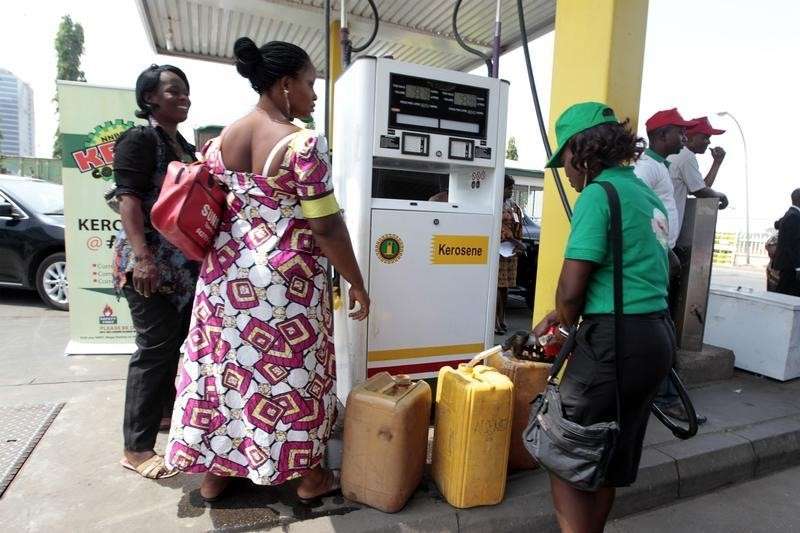Despite efforts by the Federal Government to make kerosene affordable for households, the average price of the product stood at N304 per litre in the first nine months of 2017.
A report from the Nigeria Bureau of Statistics (NBS), indicated that the product was sold at an average of N433.84, N352.42, and N311.30 in January, February and March respectively in the entire states of the nation.
Specifically, the price of the product dropped to N280.80, and rose again in May to N303.29 in the period under review.
Also, in June, the product also dropped to N287.27, and continued on a steady decline to N280.489, N225.52 in July and August.
Despite the drop in the nation’s inflation rate to 15.98 per cent in September from 16.01 per cent recorded in August, the NBS, said the average price per litre paid by consumers for National Household Kerosene increased by 17.28 percent month-on-month and decreased by -8.38 percent year on year to N264.48 in September 2017 from N225.52 in August 2017.
The agency also stated that, Plateau (N316.67), Yobe (N294.44) and Kaduna (N294.12) were the states with the highest average price per litre of kerosene.
“States with the lowest average price per litre of kerosene were Abia (N240.56), Edo (N240.00) and Ekiti (N233.33).
“Similarly, average price per gallon paid by consumers for kerosene decreased by 0.45 percent month-on-month and by 16.35 percent year-on-year to N973.72 in September 2017 from N978.10 in August 2017.”
The Nigerian National Petroleum Corporation, NNPC, stated in its July, 2017 report that, “The petroleum products (PMS and DPK only) production by the domestic refineries in July 2017 amounted to 80.18 million litres compared to 186.26 million litres in June 2017.
“A total of 1,121.92 million litres of white products were distributed and sold by PPMC in the month of July 2017 compared with 1,205.97 million litres in the month of June 2017. This comprised 1,003.01 million litres of PMS, 41.67 million litres of kerosene and 77.24 million litres of diesel.”
Finding showed that a total of 32,213,822 litres of kerosene was produced from the nation’s local refineries, which is the lowest since the beginning of the year 2017.
According to the Head of Energy Research, Eco Bank, Dolapo Oni, “kerosene imports have been really low this year. According to the NNPC report for July, there were no imports between March and July, noting that foreign exchange was responsible for the rise in the product since kerosene is deregulated.
Mr. Ndu Ughamadu, Group General Manager, Group Public Affairs Division, NNPC disclosed in a telephone interview that: “The effort of the new administration to revamp the nation’s refineries, located in Port Harcourt, Warri and Kaduna, is yielding result.”
“That particular period in question, the refineries produce at an average of 60 percent, and bulk of the kerosene consumption was produced by the refineries, particularly Kaduna and Port Harcourt.
“The most important thing in the market is availability, and if NBS report say 17.28 percent, that’s insignificant compare to the time when price rose up to 300 percent, it’s a manageable figure, and the refineries demand recommendation.
However, StraightNews gathered that a litre of the product cost N200 and N220 in Uyo between September and October. In the rural areas of the state, the prices rose astronomically from N250 to N300.

